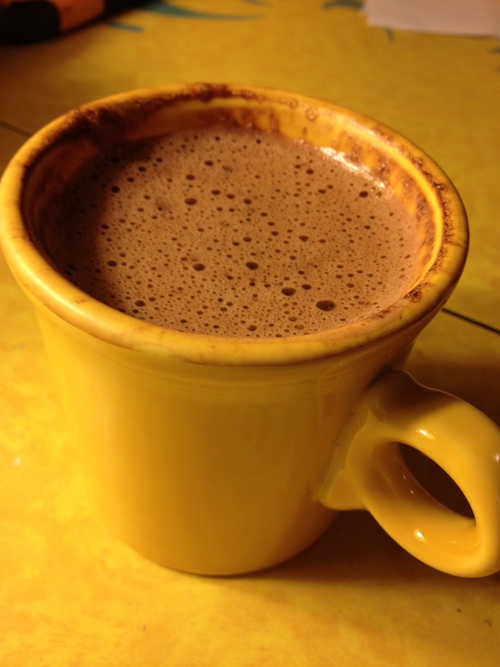Here are two conversations about hot chocolate.
The first one didn’t happen. The second one did. Read them both, then I’ll tell you about their meaning.
Both conversations begin on a cold November night in Minnesota. Unseasonably cold. Fourteen degrees, to be precise (–10 Celsius).
Zero marshmallows for me on this cold night.
Tabitha (7 years old), Griffin (10 years old) and I get in the car to head for Tabitha’s basketball practice.
What might have been
Me: Wow! It is cold!
Tabitha (7 years old): You know what you do when it’s cold? You make hot chocolate.
Me: Ooooo! Good idea! We can do that when we get back home after practice.
T: Does it count as dessert?
Me: If you have marshmallows in it, it does.
T: I won’t have any marshmallows, then. So I can have some Jell-O.
Griffin agrees that this is the way to go, and the conversation moves on to other things.
What actually happened
Me: Wow! It is cold!
Tabitha (7 years old): You know what you do when it’s cold? You make hot chocolate.
Me: Ooooo! Good idea! We can do that when we get back home after practice.
T: Does it count as dessert?
Me: If you have two marshmallows in it, it does.
T: I’ll have zero marshmallows in mine, then, so I can have some Jell-O.
Griffin (10 years old): I’ll have one marshmallow, and a small serving of Jell-O. Wait, no! I know! I’ll cut a marshmallow in half!
I presume that this is in order to maximize his allowable Jell-O serving, while still retaining some marshmallow in his hot chocolate. It’s a scheme nearly as complicated as credit default swaps.
So what do we learn?
One small difference changed the course of the conversation—my use of a number word. I could have said, “It counts as dessert if you have marshmallows in it.” But I did say, “It counts as dessert if you have two marshmallows in it.”
Using numbers—two marshmallows instead of just marshmallows—invited the children to talk about numbers. It invited them to use numbers to maximize their benefit. It invited them to think about numbers.
This invitation is important.
A few years back, researchers paid careful attention to the ways preschool teachers talked with their students. Those teachers who used more number words and concepts as they talked with children stimulated greater growth in math than those who used less math talk.
This was not a study about math instruction; it was a study about the math language that these teachers used when they weren’t teaching math. “Yes, you three may help me.” versus “Yes, you may help me.” is the sort of difference that matters.
Using number words and math concepts in everyday speech invites children to notice and to think about number. That’s what Talking Math with Your Kids is all about.

